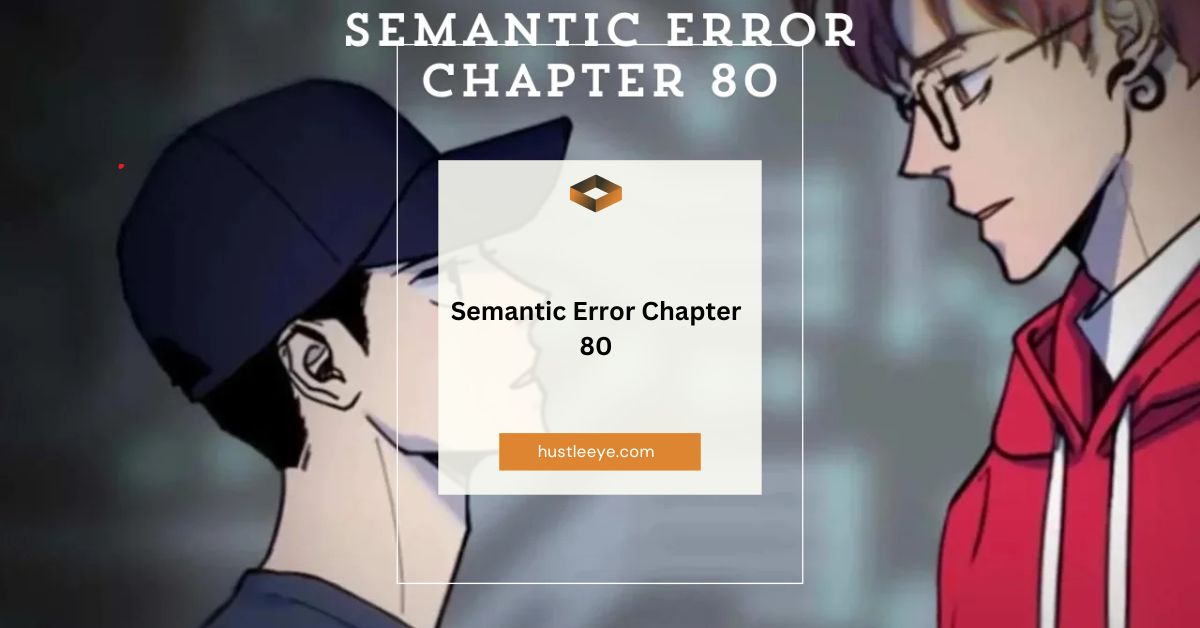The world of webtoons is rife with complex storytelling, hidden meanings, and passionate fan theories, and among them, “Semantic Error” holds a special place. Chapter 80, in particular, has captivated the imagination of fans, offering an enigmatic experience unlike any other in the series. This article delves deep into the phenomenon of “semantic error chapter 80”, exploring its potential meanings, its impact on the narrative structure, and its relevance to the broader themes of the webtoon.
Table of Contents
Understanding the Enigma: What is Chapter 80?
The discussion of “semantic error chapter 80” begins with an acknowledgment of its ambiguous nature. Unlike other chapters with clear story arcs, Chapter 80 throws a figurative curveball, leaving readers in a state of interpretive wonder. The absence of a concrete plot and the cryptic reference to a “semantic error” have sparked endless interpretations and debates online.
Read More: CrewLogout.com: Modern Solutions for Aviation Crew Management
The Chapter 80 Debate: Reality or Illusion?
Before diving into interpretations, it’s important to address the uncertainty surrounding Chapter 80 itself. There is no official confirmation from the creator, Jang Gwan, about its existence or purpose. Some readers believe it’s a legitimate chapter intended to be part of the story, while others suspect it’s an elaborate fan theory or an inside joke.
Regardless of its origin, Chapter 80 has become a cornerstone of the “semantic error chapter 80” fandom. The lack of a definitive answer adds to its intrigue, inviting fans to engage with the story on a deeper level and actively participate in constructing its meaning.

Dissecting the Layers: Potential Interpretations of Chapter 80
Several potential interpretations emerge when we examine Chapter 80 through various lenses:
1. Allegorical Representation of Exploration:
The most literal interpretation draws upon the webtoon’s title itself. In computer science, a semantic error refers to a mistake in code that doesn’t prevent the program from running but produces incorrect results. Chapter 80, with its lack of a clear narrative, may represent a metaphorical “semantic error” within the story itself.
This interpretation encourages readers to re-examine previous chapters, searching for potential inconsistencies or areas where the narrative might have deviated from its intended path. It adds a layer of complexity, inviting a more analytical reading experience.
2. Breaking the Fourth Wall: A Peek into the Author’s Process
Another interpretation suggests Chapter 80 represents a break in the fourth wall. It could be Jang Gwan’s way of acknowledging the challenges of storytelling, the frustration of encountering narrative roadblocks, or even a playful jab at readers who might be overly focused on plot details.
This interpretation positions Chapter 80 as a meta-commentary on the creative process. It allows readers to connect with Jang Gwan on a more personal level, understanding their struggles and triumphs as a storyteller.
3. A Chapter Lost in Translation:
Some readers speculate that Chapter 80 may be a chapter lost in translation. This theory suggests that the original Korean chapter contained a narrative element that didn’t translate well into other languages, leading to the current confusion.
While intriguing, this interpretation is difficult to verify without confirmation from the author or access to the original Korean version.
4. A Symbolic Void: Exploring the Power of Absence
A more nuanced interpretation sees Chapter 80 as a deliberate act of omission. By presenting a blank space or a narrative dead-end, Jang Gwan may be prompting readers to fill the void with their imagination.
This interpretation celebrates the power of the audience’s involvement in creating meaning. It allows readers to project their own experiences and desires onto the story, making it a truly personal experience.
Read More: Antarvwsna: A Revolutionary Technology in the Digital Age
Beyond Chapter 80: Thematic Echoes
Regardless of the specific meaning, Chapter 80 resonates with several key themes present throughout “Semantic Error”:
1. Miscommunication and Misunderstandings:
The central conflict between Sang-woo and Jaekyung in “semantic error chapter 80” revolves around misunderstandings and miscommunication. Chapter 80, with its lack of clarity, could be a reflection of this theme. It reminds readers of the inherent difficulty in communication and the importance of open dialogue.
2. Imperfection and the Beauty of Flaws:
The inky world, often celebrated for its acceptance of imperfections, finds a parallel in Chapter 80. It challenges the reader’s expectation of a perfect, linear narrative, embracing the beauty of the unexpected and the unfinished.
3. The Importance of Perspective:
Chapter 80 forces readers to adopt different perspectives on the story. Is it a narrative mistake, a meta-commentary, or an invitation to participate? This act of perspective-shifting mirrors the webtoon’s focus on understanding Jaekyung’s point of view and the journey of empathy Sang-woo embarks on.
Read More: Miocreate: Revolutionizing Face Swapping with AI – A Comprehensive Guide
Chapter 80: A Catalyst for Fan Engagement
Perhaps the most significant impact of Chapter 80 lies not in its specific meaning, but in the way it fosters a dynamic fan community. The lack of a definitive answer creates a space for discussion, analysis, and creative interpretations.
This active engagement with the content goes beyond passively consuming the story. It invites fans to become co-creators, adding their voices to the evolving narrative and exploring the limitless possibilities of storytelling.
Read More: Crackstreams 2.0: The Ultimate Guide to Live Sports Streaming
FAQs About “Semantic Error Chapter 80”
1. What is the significance of Chapter 80 in “Semantic Error”?
Chapter 80 holds a legendary status among fans for its ambiguous nature and lack of a clear narrative, which has led to various interpretations and discussions about its meaning.
2. Is Chapter 80 an official part of the “Semantic Error” webtoon?
There is no official confirmation from the creator, Jang Gwan, about the existence or purpose of Chapter 80, making it a subject of speculation among fans.
3. What are some popular interpretations of Chapter 80?
Some popular interpretations include viewing Chapter 80 as a metaphorical “semantic error” in the story, a break in the fourth wall by the author, a chapter lost in translation, or a symbolic void inviting readers to fill in the gaps with their imagination.
4. How does Chapter 80 relate to the broader themes of “Semantic Error”?
Chapter 80 echoes themes of miscommunication, imperfection, and the importance of perspective, all of which are central to the narrative of “Semantic Error”.
5. Why is Chapter 80 important to the fan community?
The ambiguity of Chapter 80 has fostered a dynamic fan community, encouraging active engagement, discussion, and creative interpretations of the story.
Conclusion: The Legacy of Semantic Error Chapter 80
The enigmatic nature of “semantic error chapter 80” has transformed it into a phenomenon within the webtoon community. Its ambiguous existence and myriad interpretations have not only sparked endless discussions but also enriched the reading experience by inviting fans to explore deeper meanings and perspectives. As the narrative of “Semantic Error” continues to unfold, Chapter 80 remains a testament to the power of storytelling and the boundless creativity of its audience.


